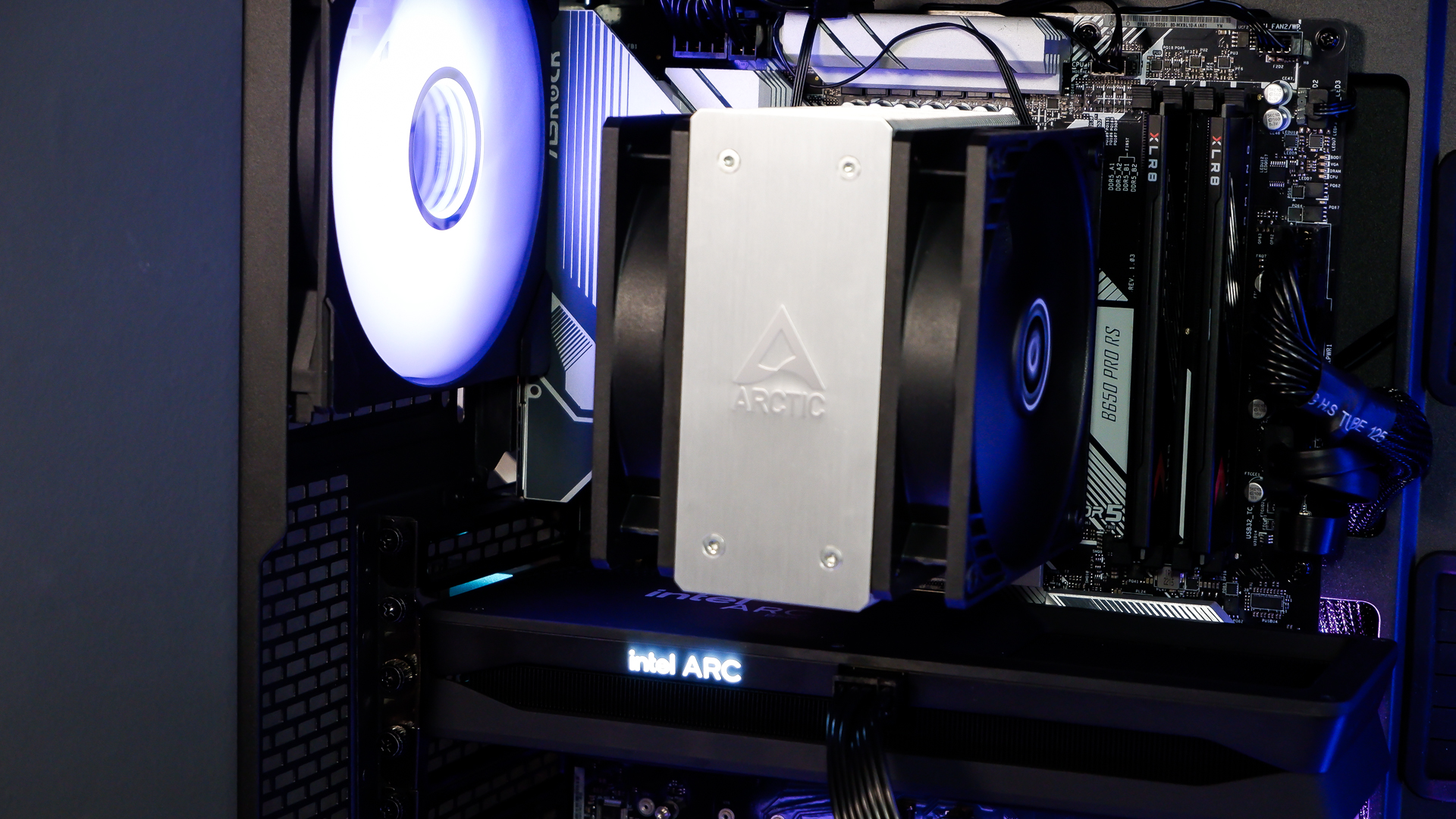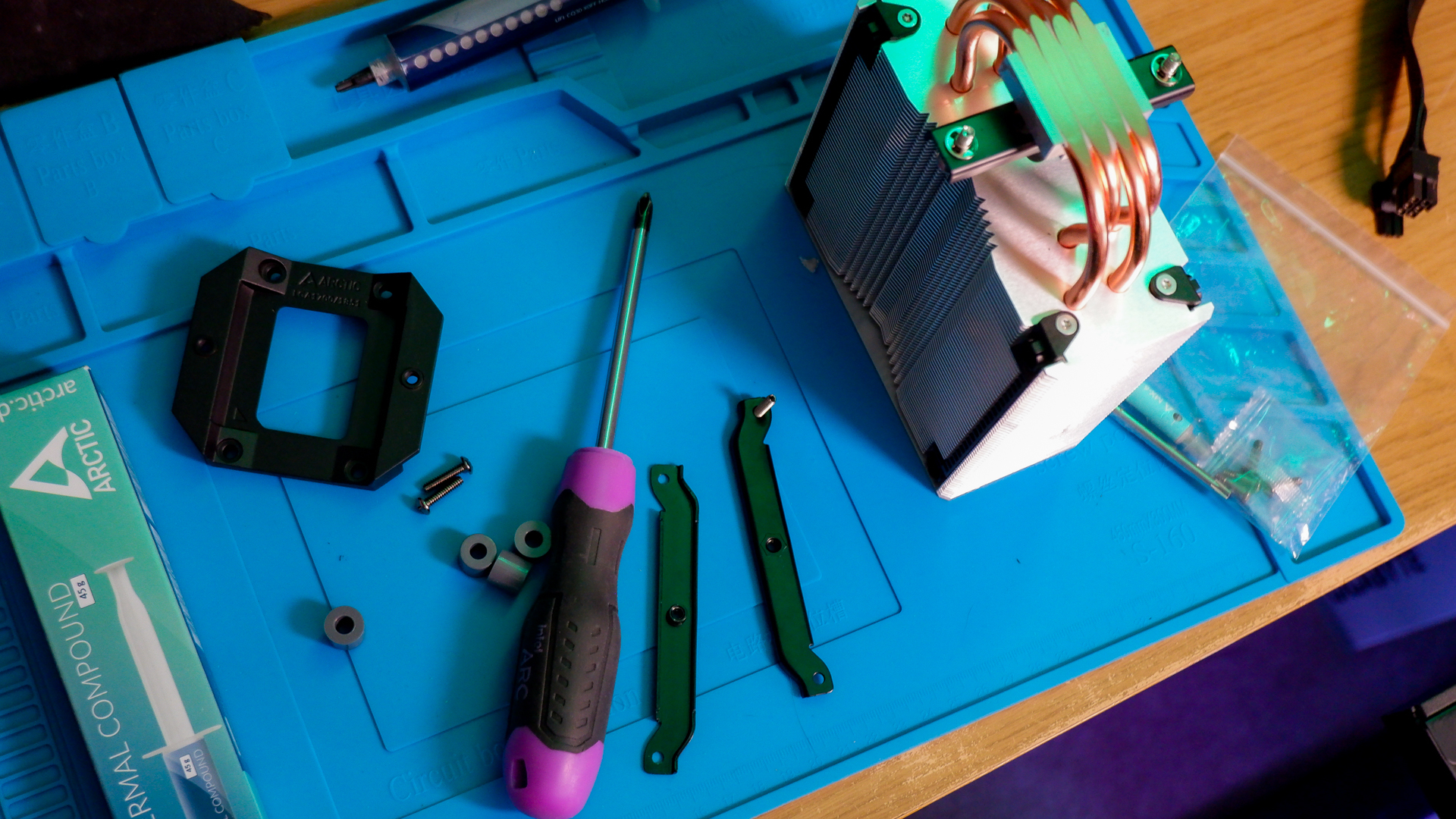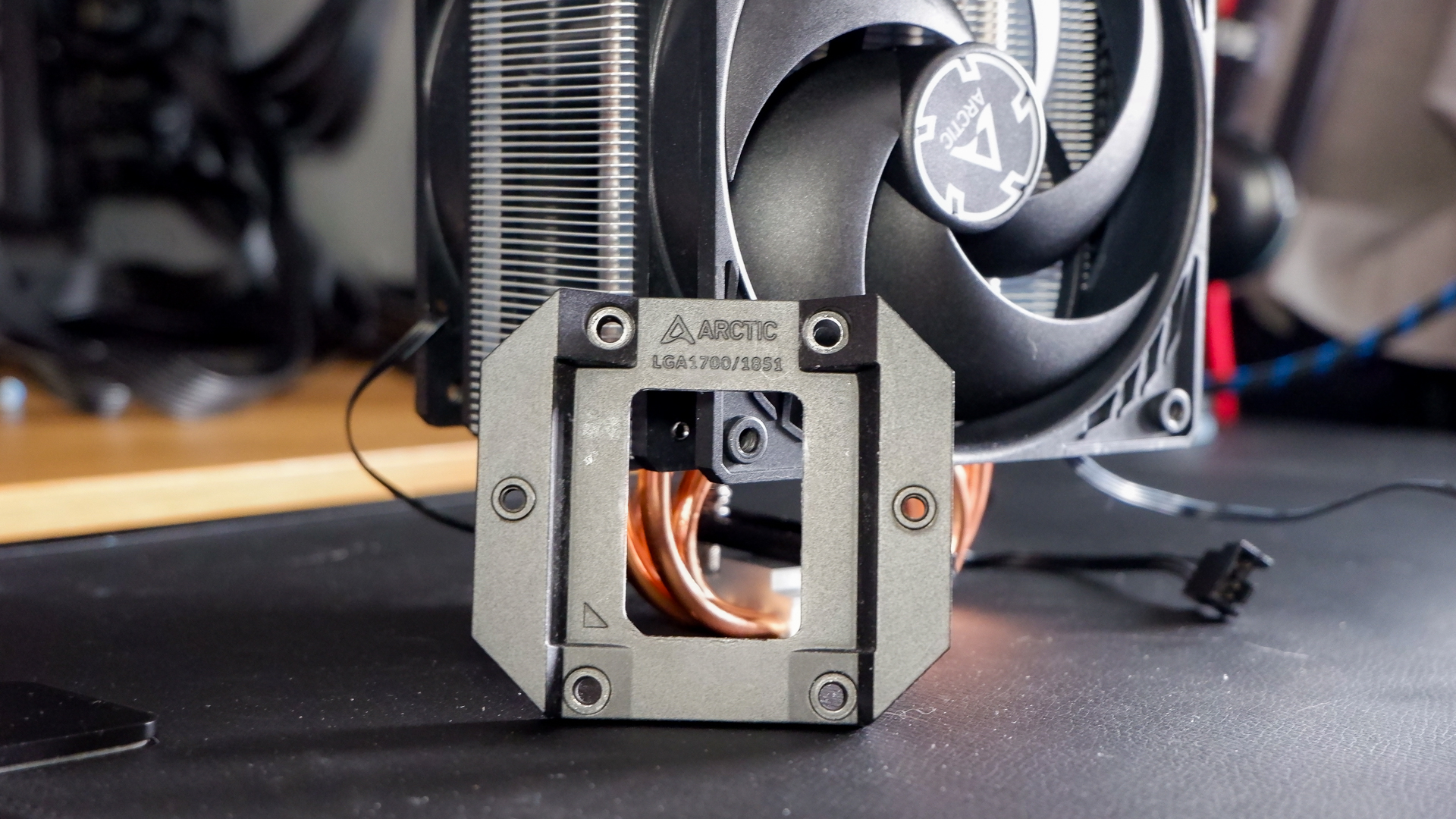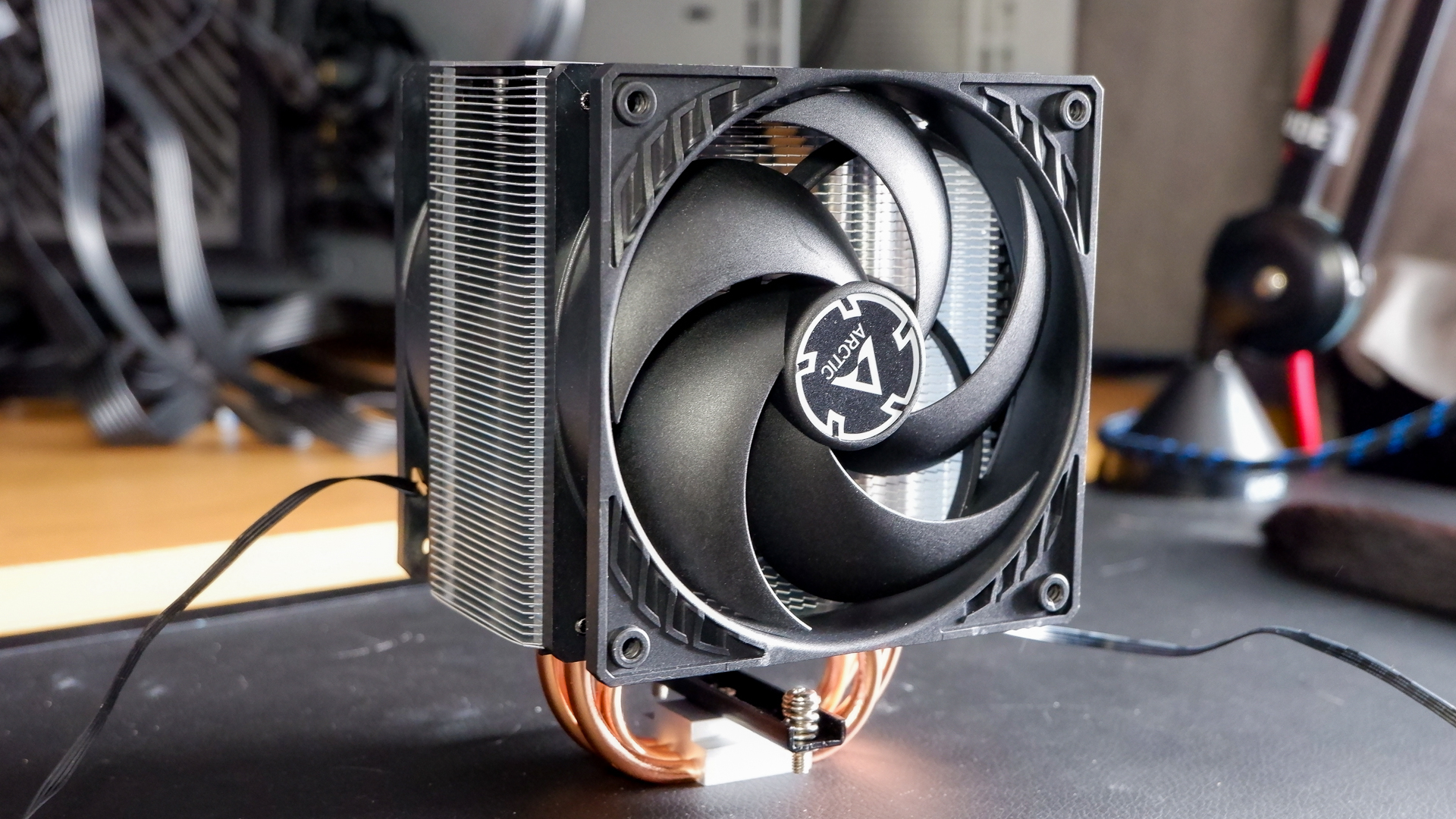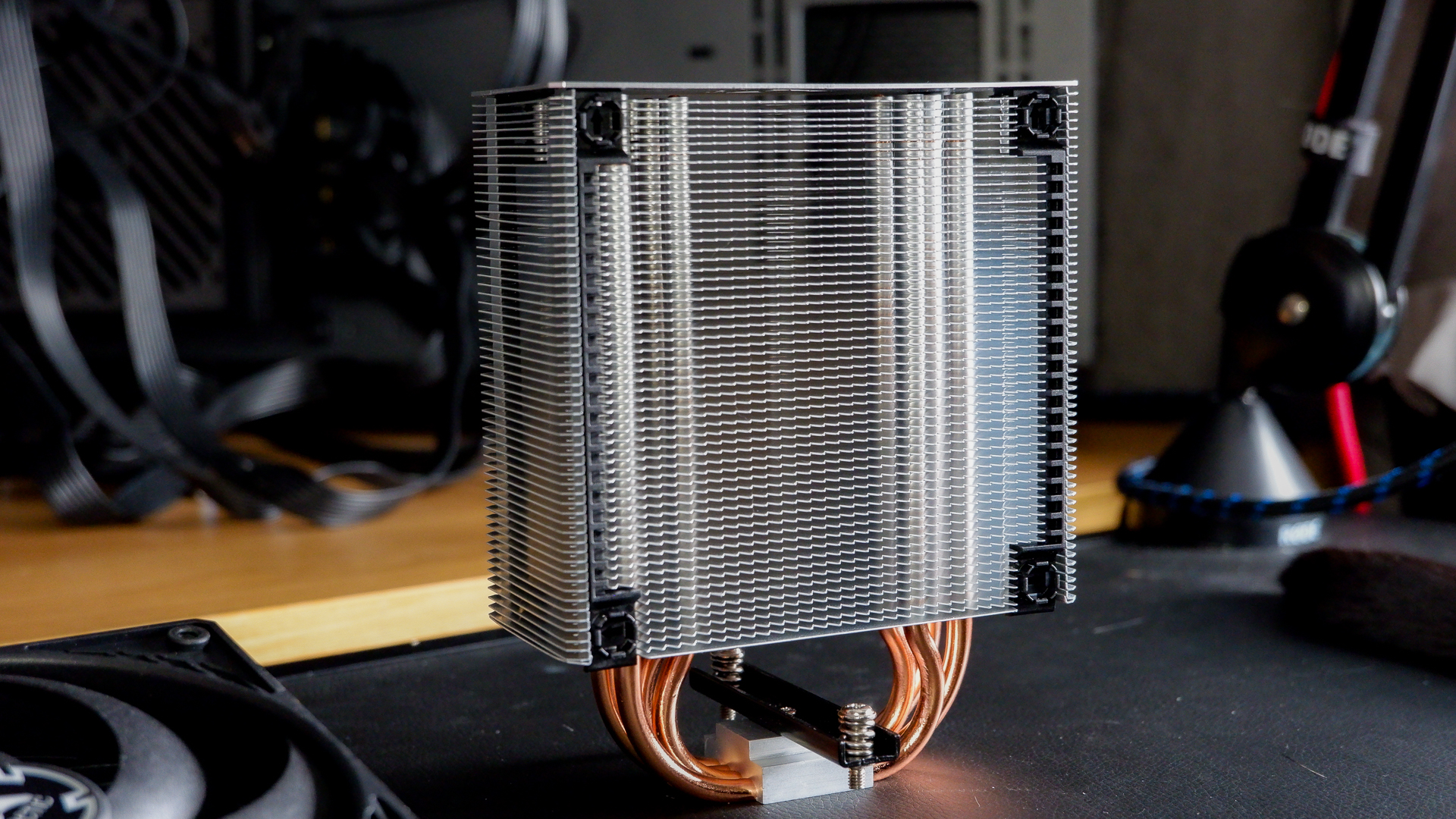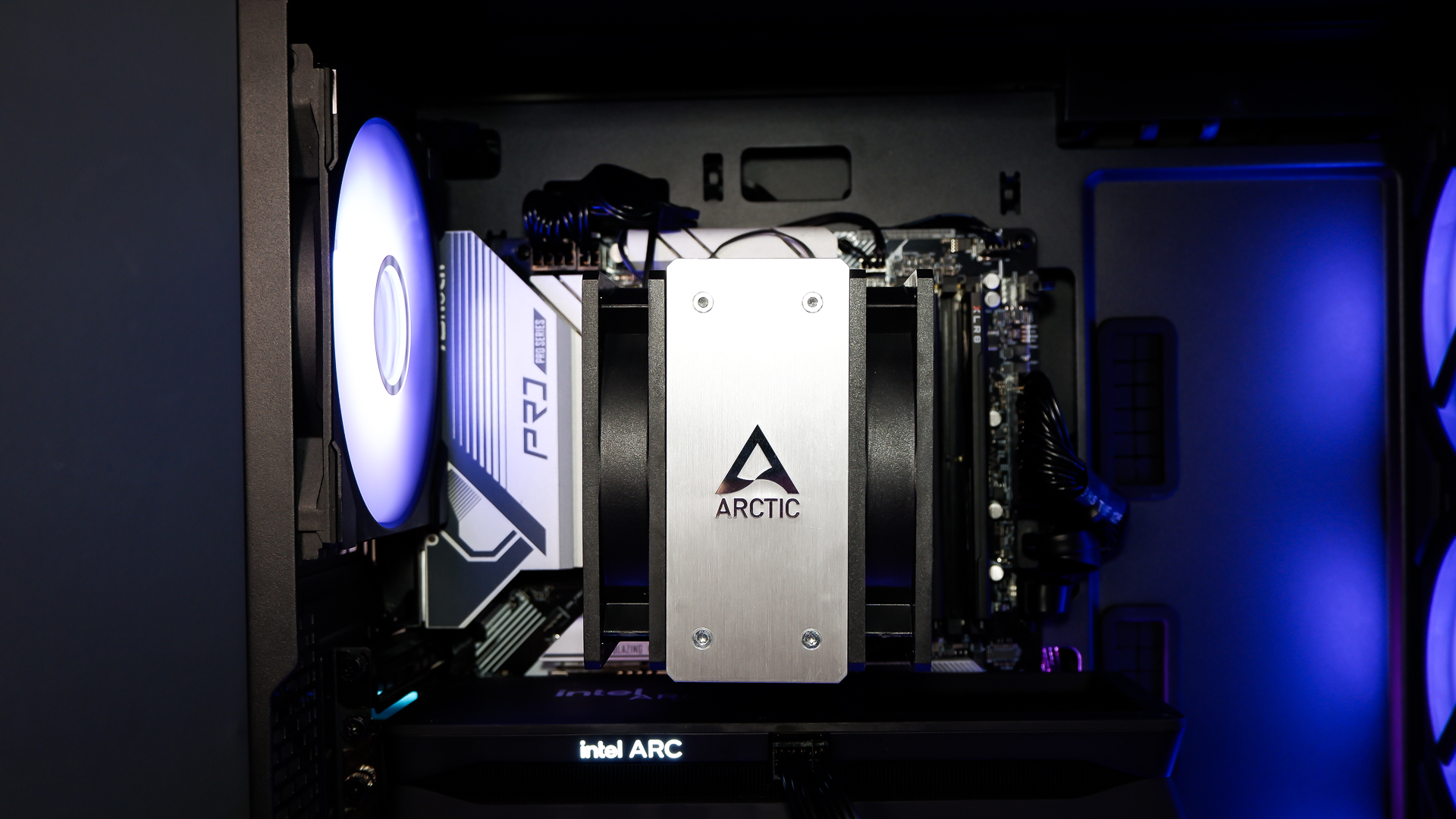
An all-round excellent air cooler.
You can’t beat an air cooler on a budget and there’s no better example of that than the superb Arctic Freezer 36. It’s quiet, performs exceptionally well, and is very affordable—what more could you ask for?
Arctic has nailed the formula with the Freezer 36. I’ve used other popular designs from the company prior to this, such as the Freezer 34, but without a doubt the Freezer 36 is the one to buy today. A big part of that is price. You can buy a Freezer 36 for $46/£23 today, which puts it very much on the budget end of price scale—a true budget hero in the UK, if pretty close in the US, too.
That’s the price for model with aluminium and copper on show, and the one I have for review. It doesn’t look half bad. However, you can also spend a few dollars more on the all-black version ($48), or a little more again (in the US) on the RGB version ($59/£35). If I had the option at the time, I’d have gone for the all-black, but this is a popular cooler, and for good reason.
The Freezer 36 is ready for any modern PC, with AM4/AM5 mounting options and support for Intel LGA1700 and LGA1851 using an included contact frame.
That’s right, a contact frame is included in the box with this budget cooler. I’m as surprised as you are. If you’re not familiar, this is a replacement for the ILM (levered mounting bracket) that comes pre-installed on a motherboard. It surrounds the CPU on all sides, and offers a studier point to mount a cooler onto. It’s a good thing to have with a 13/14th Gen Intel processor as these are prone to bending ever-so-slightly under continued use, which can lead to higher temperatures over time. A contact frame prevents that.
So, this budget cooler comes with a contact frame, saving around $10, maybe more, on buying one separately. It’s good to see a manufacturer taking processor bend seriously, too, alongside brands like Noctua that have released models of their coolers for already bent chips (once a chip is bent, it’s staying that way).
I’ve carried out all my testing using our usual Core i7 14700K test bench. That means loading the contact frame into place for installation. It’s a bit trickier to install than a traditional Intel cooler bracket, which often tend to be screwed into place using a rear bracket. There is more scope for damaging your motherboard’s socket without the ILM in place, which you have to remove using an included Torx key. Once off, it’s much easier if you have your motherboard laid flat to keep the CPU in the socket, then it’s fairly easy to fit the contact frame around it, making sure to orient it the correct way using the matching symbols and keeping the rear plate in the correct position.
Like I said, the Freezer 36 is trickier to install on an Intel chip than your average cooler, but a contact frame is worthwhile to have, especially on a brand new chip. I also installed the Freezer 36 on an AMD-powered PC. This was a simpler process, and only required removing the motherboard cooler mounting points and replacing with the included brackets and spacers.
Oh, and there’s a small 0.8 gram tube of Arctic MX-6 thermal paste in the box that’s good for an install or two. I didn’t use it, as I test with MX-4 across everything, but it’s great to see everything you need included in the box.
With the cooler installed, it’s onto testing.
The Freezer 36 manages to deal with the power-hungry Core i7 14700K extremely well while gaming. On average, in extended runs of Metro Exodus Enhanced Edition and Baldur’s Gate 3, it outperformed the Cooler Master Hyper 612 Apex and Be Quiet! Dark Rock 5, both of which are more expensive, and it even matched the Noctua NH-D15 G2 in Baldur’s Gate 3. It did allow for marginally higher maximum temperatures at times, and this is where the NH-D15 G2 comes into its own, though well within the expected variance with cooler testing.
It is a different story when it comes to Cinebench R23 and X264 benchmarks, both of which are hugely CPU intensive. Not a single air cooler I’ve tested to date is able to handle the 14700K in these benchmarks and the Freezer 36 doesn’t buck that trend.
However, I do run a separate test in which I tune the 14700K down to 120 W. This puts the power-hungry Intel chip, usually able to run up to 253 W, on a more level-pegging with modern Intel and AMD processors, the latter often running at a 120 W TDP. It’s not a massive drop for the 14700K, as it more often than not runs closer to 120 W than 253 W, but it does mean the Freezer 36 and most other air coolers stand a chance of keeping it cool.
PC Gamer test rig
CPU: Intel Core i7 14700K | Motherboard: Asus ROG Maximus Z790 Dark Hero | GPU: Nvidia RTX 4070 Founders Edition | RAM: G.Skill Trident Z5 @ 5600 MT/s | SSD: Sabrent 2 TB | PSU: Gigabyte Aorus P1200W | Case: Thermaltake Core P5 (open)
✅ You want a simple, affordable cooling solution: You needn’t go overboard on your CPU cooler. The Freezer 36 is all you really need for most modern chips, and it won’t break the bank.
❌ You want the simplest installation on Intel: The inclusion of a contact frame is awesome, though it does make for a slightly more involved install process compared to some. AMD installs are easy enough, anyways.
Since I also fitted this cooler inside a gaming PC powered by a Ryzen 5 9600X, I can confirm it manages to cool just about anything that chip can muster. Even throwing Cinebench R24, Blender, 7Zip and 3DMark Time Spy Extreme only saw a max temp of 72 °C, and throughout various gaming benchmarks it kept the CPU at 62 °C or lower.
All of which is to say, it performs easily as well as more premium air coolers, but what’s more is how quietly it goes about it.
This single-tower cooler is sandwiched between two P12 PWM PST fans. These aren’t anything special, except that they connect to the tower using what Arctic calls a ‘click system’, which is essentially made up of small metal fittings that click into place without any additional clips. It’s a small difference, but it makes for a cleaner finish overall.
What is special is these two fans make very little noise during operation. We test all coolers with the fans ramped up to 100%, to get a gauge of the maximum performance on offer, and these two were quieter than some coolers with just one. Seriously impressive, Arctic, and you wouldn’t expect it from looking at it.
Quiet, performant, and affordable—the Freezer 36 gets a whole lot right. You could spend more on something like the Be Quiet! Dark Rock 5 for better looks, or get something flashier in the Cooler Master Hyper 612 Apex or 212 Pro, but you wouldn’t get anything as complete as you would with the Freezer 36. I won’t belabour the point for long as I think this is one of the easiest recommendations I’ve made in years: if you need a cooler for your next CPU upgrade, and you don’t want to spend a lot, the Arctic Freezer 36 is easily one of the best you can buy today.

